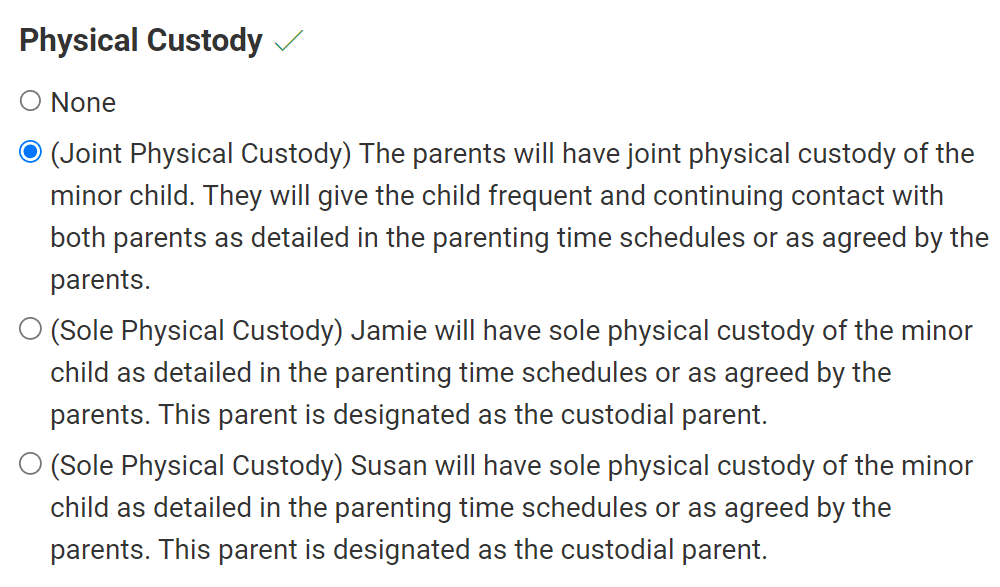Divorce Stipulation Agreements
Agreeing on the terms of your divorce is commendable — but you need to make sure you write them up properly. You need a solid divorce stipulation agreement.
What is a divorce stipulation?
The phrase divorce stipulation (or divorce stipulation agreement) is another name for a divorce settlement agreement. This is a document where divorcing spouses explain everything they agree to.
A judge will usually approve your divorce stipulation so that you can avoid trial. First, they'll make sure you've both entered into it honestly and voluntarily, and they'll check that anything about parenting aligns with what's best for your children.
Most courts and legal professionals understand the term divorce stipulation, but only some locations — like New York, South Dakota and Vermont — use it in their official name for the document explaining a divorce settlement.
Divorce stipulation could also refer to just an item in a divorce settlement agreement.
An uncontested divorce, in which the divorcing spouses agree on all the items in their case, is sometimes called a stipulated divorce.
Writing a divorce stipulation agreement
Writing a divorce stipulation agreement is the same as writing a divorce settlement agreement.
You have several options for creating one:
- Use a lawyer — Write a proposal together to speed up the process and lower legal costs. One spouse could hire a lawyer to turn it into a formal document; the other could hire their own to look it over. Or you could turn to collaborative law for support while you're trying to compromise.
- Use a mediator — A mediator will help you compromise with your spouse, and many will write your decisions into a divorce stipulation at the end.
- Use an online service — Sites like Hello Divorce guide you through the creation of a divorce stipulation.
- Use a template — Your court may provide one, or you can find one online. A good template ensures that you don't overlook anything important and that the judge understands your format.
Whichever route you choose, your divorce stipulation should be clear and detailed with no loopholes.
If your divorce involves child custody because you have minor children together, you'll need to attach a parenting plan. This explains how you'll co-parent and sets your custody schedule.
Common stipulations in a divorce settlement
What a settlement agreement says depends on the divorce. Here are some common stipulations.
Who will keep the house
Are you going to sell the home (now or later) and split the proceeds? Will one spouse buy out the other's share? There are many ways to handle a home owned by a divorcing couple.
How you'll split other assets and debts
Check what your state considers separate property (belonging to one of you) and marital property (belonging to both of you). Then decide how to divide all your marital debts and assets: loans, bank accounts, investments, businesses, valuables, etc.
Specify how you'll handle each item, even if it seems obvious. For instance, will each spouse keep their wedding ring?
Whether there will be alimony payments
Not all divorces include alimony (aka spousal support). If yours will, explain the details clearly. For instance, you might have one lump payment or a monthly payment over several years. Some states suggest an alimony formula, but you can choose to ignore it.
When each parent will have the children
The parenting plan that accompanies your divorce agreement will probably include a custody schedule. Parents who get along extremely well might leave the schedule out and just say whether they'll share joint physical custody or give one parent sole physical custody.
 You can customize this with Custody X Change.
You can customize this with Custody X Change.
Who will make major decisions about the children
In your parenting plan, state whether you've agreed to joint legal custody or sole legal custody.
How you'll split your children's expenses
The court usually decides the amount of child support, which is designed to even out the day-to-day costs each parent covers for the child (e.g., food and clothing). You can specify in your parenting plan whether you'll share the children's other costs.
 You can customize this with Custody X Change.
You can customize this with Custody X Change.
After your divorce settlement
If you don't have a child, you may not need to have much communication with your former spouse after you part ways.
But if you have a child with them, your divorce settlement is only the beginning of your new co-parenting relationship. A co-parenting app can be vital to making it work.
The Custody X Change online app has a thorough set of co-parenting tools: shared calendars, parent-to-parent messaging, expense tracking and more.
Turn to Custody X Change to ensure the best possible future for your child and your evolving family.
